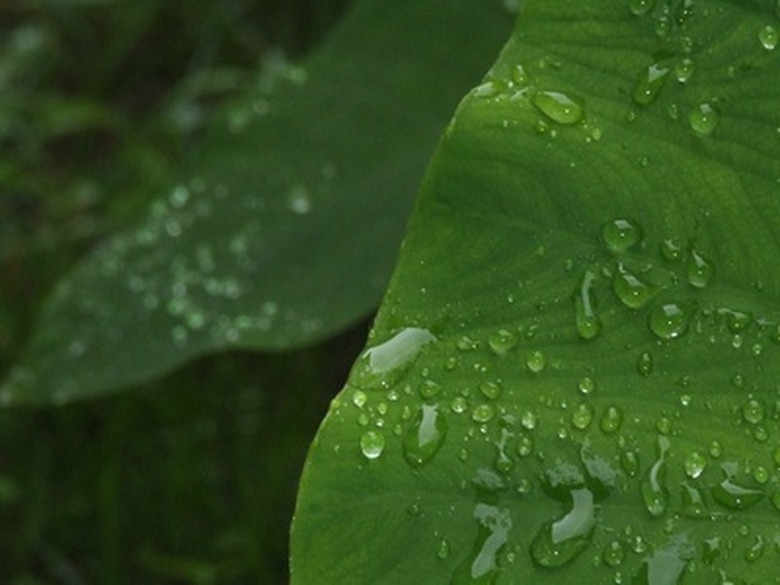How To Mold Elephant Ear Leaves
Things Needed
- Builder's sand, 40 lbs.
- Water
- Plastic wrap
- Scissors
- Elephant ear leaf
- Stiff-bristled scrub brush (optional)
Mold elephant ear leaves from your garden into permanent showpieces, using the cement castings for birdbaths, wall art or serving platters. Molding an elephant ear leaf is not challenging, but the project takes a couple of hours to complete and an additional week to cure, so plan ahead. Work outside in dry weather. Elephant ear leaves are good candidates for molding and casting since they are large, attractive and thick.
Step 1
Build a large sand pile, using builder's sand. Smooth the sand into a half dome that is large enough to fit the elephant ear, packing the sand together. Add a small amount water so that the sand sticks together and compresses; dry sand will only fall when piled.
- Mold elephant ear leaves from your garden into permanent showpieces, using the cement castings for birdbaths, wall art or serving platters.
- Add a small amount water so that the sand sticks together and compresses; dry sand will only fall when piled.
Measure the size of the elephant ear leaves in your garden to determine how big to make the sand dome.
Step 2
Cover the sand dome with plastic wrap.
Step 3
Cut an elephant ear leaf off your plant, removing its stem. If you cut the leaf first it can wilt while you make the sand pile. Place the leaf on the plastic-wrapped sand dome, face down. Smooth the leaf out against the sand.
Step 4
Mix molding concrete by pouring dry concrete into a wheelbarrow or large bucket then adding water per the manufacturer's recommendations. Stir the water into the concrete until the mixture has the consistency of brownie batter, advises Garden Gate Magazine.
- Measure the size of the elephant ear leaves in your garden to determine how big to make the sand dome.
- If you cut the leaf first it can wilt while you make the sand pile.
Step 5
Spread the concrete over the elephant ear leaf, creating a layer that is 3/4-inch thick in the center and tapers to 1/4-inch thick at the edges. If you make a thinner mold, your elephant ear may crack.
Step 6
Cover the concrete with plastic wrap so it can dry and cure. Leave the plastic wrap on the elephant ear mold until the concrete dries out, typically within 48 hours. Humid weather will delay the drying time.
Step 7
Pull off the plastic wrap when the leaf feels dry to the touch. Then pull off the leaf, which should come free easily. If pieces of the leaf stick, you can work them off with a stiff bristled scrub brush.
- Spread the concrete over the elephant ear leaf, creating a layer that is 3/4-inch thick in the center and tapers to 1/4-inch thick at the edges.
- Leave the plastic wrap on the elephant ear mold until the concrete dries out, typically within 48 hours.
Step 8
Allow the elephant ear to cure for one week before using.
Tip
Be careful when handling the elephant ear leaf to avoid tearing it.
